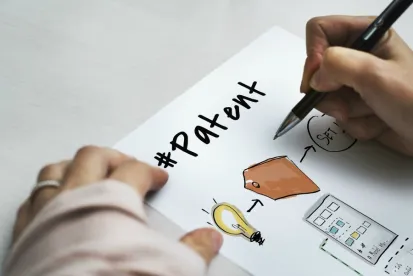Tasked with starting an innovation protection and patent development program at your company but do not know where to begin? This three part series describes the key components to a patent development program for any company, small or large. This first installment in the series describes establishing the infrastructure and processes within a company to support and grow a successful patent development program.
Establish a Process for Handling Innovations
There are multiple ways to set up a system to process innovations, but each should include the cornerstones of a patent review board, an inventor rewards program, and a standardized invention disclosure form.
A patent review board is a board of company stakeholders with authority to decide how to handle each innovation submitted to the board. In order to ensure that the board properly examines and evaluates each innovation, the board itself should include key business, legal, and technology stakeholders within the business itself. These positions can include technical or development team members (engineers, scientists, design team members, etc.), in-house counsel, outside counsel or other intellectual property advisors, business directors (e.g., officers with product roadmap knowledge, marketing team members, etc.), or any other person who is a part of helping guide the company’s future. With all of these different skill sets gathered, the board can evaluate innovations under different lenses. For example, the engineers can determine if and how to develop the innovation for market. In-house counsel in cooperation with outside IP counsel or other advisors can comment on whether and how the innovation can be protected (e.g., utility patents, design patents, trademark, copyright, trade secret, etc.) while also providing insight regarding other legal considerations such as public relations, regulatory issues, etc. and projected costs to establish such protections. Business directors can determine how to develop the innovation into a sellable product for a market and where it fits into the company’s product plans. If each group on the board determines that the innovation is sufficiently valuable relative to the expect monetary and opportunity costs of protecting it, the innovation can be passed to in-house or outside IP counsel to undertake the necessary steps (e.g., drafting a patent application, preparing a trademark or design patent application, designating as a trade secret, filing for copyright registration, etc.).
Even with a proper patent review board formed, a business can further drive its employees to develop protectable innovations. One way to incentivize its employees is to implement an inventor rewards program. These programs can include monetary and non-monetary (e.g., recognition) rewards to motivate employees. The purpose of these programs can be two-fold. The first purpose is to ensure employees are working on developing new technology and coming forward with it in order to receive some form of bonus. This incentivizing system can help establish a culture of protecting IP within a company. The second purpose can be to ensure that the inventors identify any company IP and properly assign their rights to the company after innovating.
In order to ensure quality and consistency in the evaluation process, the patent review board can utilize a standardized invention disclosure form for innovators to submit all ideas to the patent review board. By standardizing the form, the board can evaluate each submitted innovation on an equal playing field, and ensure that submitted invention disclosures are robust and well-prepared. Not only does this make the patent review board’s evaluation easier and more consistent, it can also save time and resources since the approved invention disclosures can be sent directly to outside IP counsel, for example to begin drafting an application from the invention disclosure.
An invention disclosure form should include all the pertinent information regarding the innovation. For example, for a technical innovation this information would likely include a detailed technical description of the invention, including flow charts, system block diagrams, drawings of different embodiments showing key inventive features and how it differs structurally or operationally from previously available approaches, representative source code, genetic sequence listings, data on drug efficacy, etc. The invention disclosure form can also include sections about the background of the invention, general overviews of what the invention does and how the invention operates, and workarounds/additional embodiments which ask, “how would I accomplish the same thing if I couldn’t do it this way?” A litmus test for determining the quality of an invention disclosure form is that when properly filled out, can an engineer familiar with the technology understand how the invention operates and is assembled from reading just the invention disclosure form.
With all of the pieces in place, a culture of protecting IP can be established within a company, and innovations can naturally flow from innovators to the patent review board to be evaluated for further development and protection. If done correctly, an internal IP protection process can become efficient from a time and cost standpoint, and protects company’s core technology and innovations for the future.





 />i
/>i
